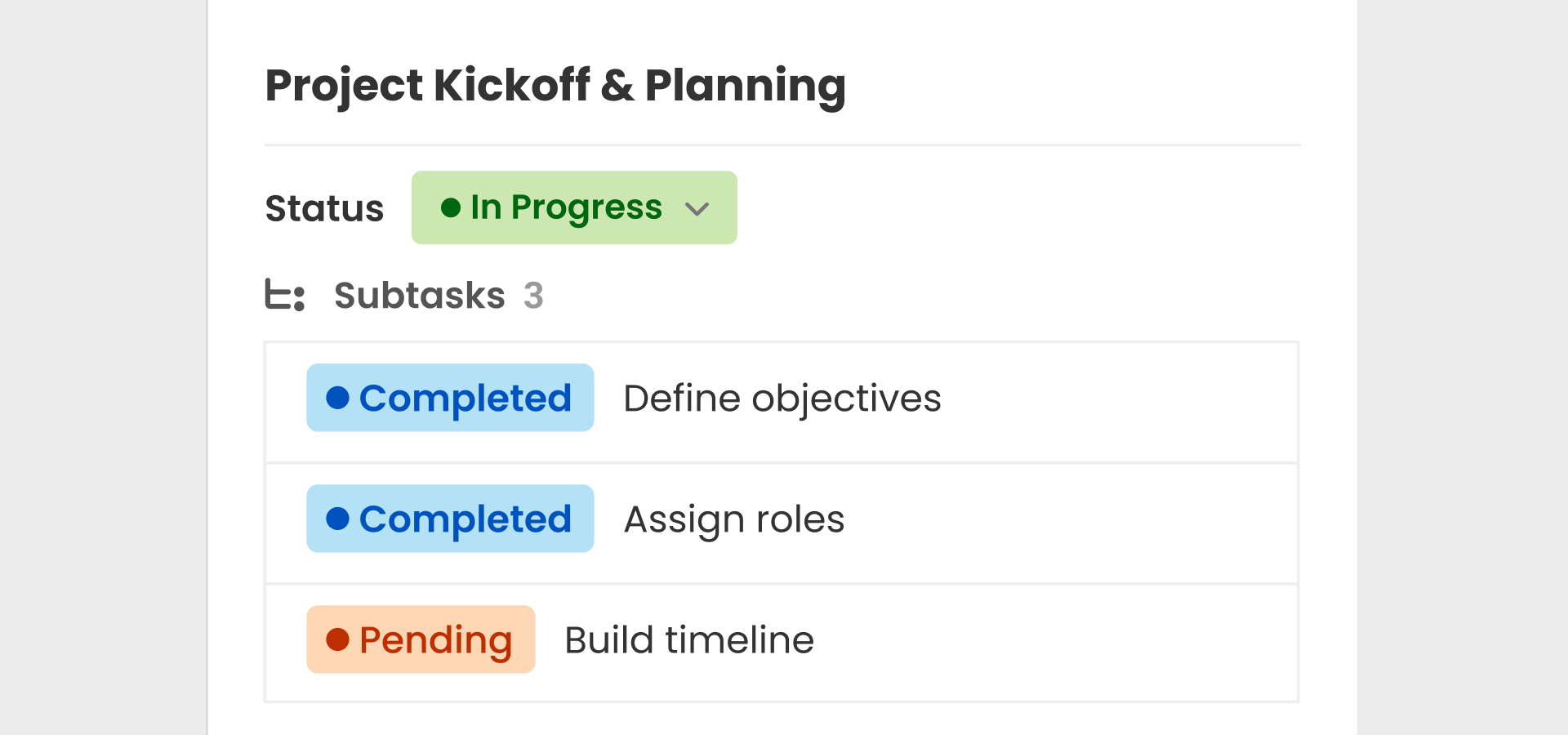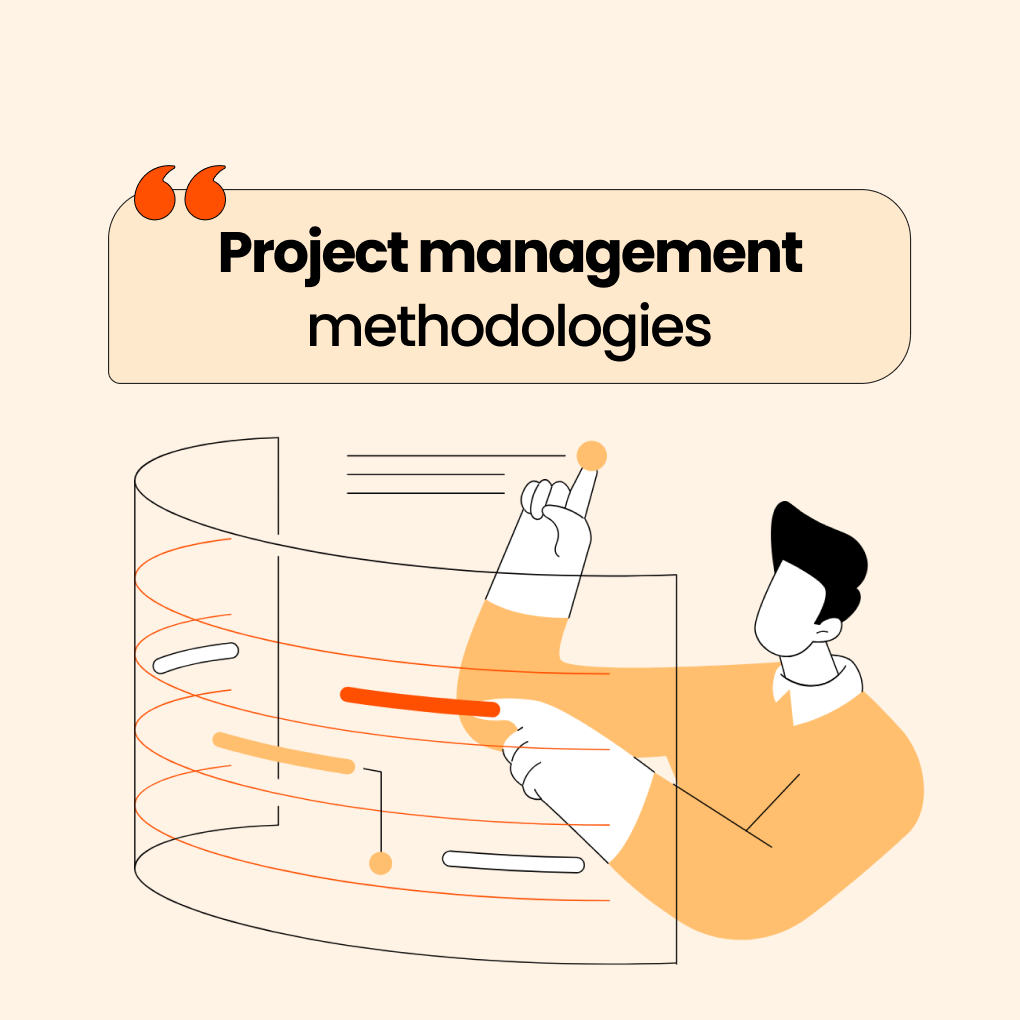Project management has undergone significant changes over the years, evolving from basic task lists and milestone tracking to advanced methodologies that help teams navigate complex projects. In today’s competitive business environment, selecting the right project management methodology can be the key to project success or costly failure. Whether you are an experienced project manager, team leader, or business owner, understanding the various project management methodologies is essential for delivering projects on time, within budget, and to the satisfaction of stakeholders.
The field of project management offers a variety of approaches, each with its own frameworks, principles, and applications. From traditional waterfall methods that focus on sequential planning to agile methodologies that prioritize flexibility and iterative development, the choice of methodology greatly influences how teams collaborate, communicate, and achieve results. This guide will explore the most popular and effective project management methodologies, highlighting their strengths, limitations, and ideal use cases.
What Is a Project Management Methodology?
A project management methodology is a structured framework that provides guidelines, processes, and best practices for planning, executing, and controlling projects from start to finish. These methodologies act as roadmaps, helping project managers and teams navigate the complexities of project delivery while ensuring consistency, quality, and efficiency.
At its core, a project management methodology outlines how work should be organized, who should make decisions, what tools and techniques to use, and how to measure and report progress. These frameworks establish standardized approaches to common project challenges, such as scope management, resource allocation, risk assessment, communication protocols, and quality assurance.

Typically, project management methodologies include several key components: project lifecycle phases, roles and responsibilities, deliverables and milestones, communication channels, documentation requirements, and success metrics. They provide templates, checklists, and procedures that teams can adapt to their specific project needs while aligning with organizational goals and industry standards.
The evolution of project management methodologies reflects changes in business environments, technological advancements, and lessons learned from numerous projects across various industries. Traditional methodologies originated in engineering and construction, where detailed planning and sequential processes were crucial. Modern methodologies have adapted to the fast-paced, iterative nature of software development, digital transformation, and innovation projects.
Why Use a Methodology in Project Management?
Adopting a structured project management methodology offers numerous benefits that directly influence project outcomes and organizational success. These methodologies create consistency across projects, allowing teams to utilize proven practices and avoid common pitfalls that can lead to failure.
One major advantage of established methodologies is improved predictability and control. By following structured processes and checkpoints, project managers can better anticipate potential issues, monitor progress against established baselines, and make informed decisions based on standardized metrics. This predictability is especially valuable for organizations managing multiple projects simultaneously or operating in regulated industries where compliance and documentation are critical.
Project management methodologies also enhance team collaboration and communication by clarifying roles, responsibilities, and communication protocols. When team members understand their specific contributions within the broader framework, coordination becomes more efficient, and conflicts are minimized. This clarity is particularly important in complex projects involving multiple stakeholders, departments, or external partners.
Risk management is another significant benefit of methodological approaches. Most established methodologies include strategies for identifying, assessing, and mitigating risks, helping teams proactively address potential problems before they affect project delivery. This systematic approach to risk management reduces the likelihood of delays, budget overruns, and quality issues.
Additionally, methodologies facilitate knowledge transfer and organizational learning. When projects follow consistent approaches, lessons learned can be easily captured, analyzed, and applied to future initiatives. This continuous improvement cycle helps organizations enhance their project management capabilities and develop internal expertise over time.
From a business perspective, project management methodologies support better resource allocation, more accurate project estimation, and improved return on investment. By standardizing approaches to project planning and execution, organizations can make more informed decisions about project prioritization, resource allocation, and strategic alignment.
6 Most popular project management methods >
Traditional Project Management Methodologies
Traditional project management methodologies emerged from industries where sequential processes, detailed planning, and extensive documentation were essential for success. These approaches emphasize thorough upfront planning, clear phase gates, and comprehensive documentation throughout the project lifecycle.
Waterfall
The Waterfall methodology is one of the most recognized traditional project management approaches, characterized by its linear, sequential progression through distinct project phases. In the Waterfall model, each phase must be completed before the next begins, creating a cascading effect.
Typical Waterfall phases include requirements gathering, system design, implementation, testing, deployment, and maintenance. This methodology requires extensive documentation at each phase, with formal reviews and approvals before moving on. The emphasis on detailed planning and documentation makes Waterfall particularly suitable for projects with well-defined requirements, stable scope, and predictable outcomes.
Waterfall’s strengths include a clear project structure, comprehensive documentation, and predictable timelines when requirements are well understood. This methodology is effective for construction projects, manufacturing initiatives, and regulatory compliance projects where changes are costly and requirements are unlikely to evolve significantly during execution.
However, Waterfall’s limitations become evident in dynamic environments where requirements may change or when early user feedback is crucial for success. Its sequential nature makes it challenging to accommodate changes once a phase is completed, and stakeholders may not see working deliverables until late in the project lifecycle.
Critical Path Method (CPM)
The Critical Path Method (CPM) is a mathematical approach to project scheduling that identifies the sequence of activities determining the minimum project duration. CPM focuses on analyzing task dependencies, durations, and resource constraints to optimize project timelines and resource allocation.
In CPM, project activities are mapped in a network diagram that shows dependencies and relationships between tasks. The critical path represents the longest sequence of dependent activities, and any delay in these activities directly impacts the overall project completion date. Non-critical activities have float or slack time, allowing some flexibility in scheduling without affecting the project timeline.
CPM’s primary benefit is its ability to optimize project schedules and identify areas where resources can be reallocated to accelerate delivery. This methodology is particularly valuable for complex projects with numerous interdependent activities, such as construction projects, product development initiatives, and large-scale implementations.
However, CPM requires accurate activity duration estimates and a clear understanding of task dependencies. While it excels in scheduling optimization, it may not address resource constraints or quality considerations that could impact project success.
Critical Chain Project Management (CCPM)
Critical Chain Project Management (CCPM) builds on CPM principles but incorporates resource constraints and human behavior factors often overlooked by traditional scheduling methods. CCPM recognizes that resource availability, multitasking, and the tendency to delay work until deadlines approach significantly impact project performance.
CCPM introduces buffers to protect the critical chain from variability and uncertainty. These buffers include project buffers (protecting overall project completion), feeding buffers (protecting the critical chain from non-critical activities), and resource buffers (ensuring resource availability for critical activities).
The methodology emphasizes eliminating multitasking, reducing work-in-progress, and focusing resources on completing activities rather than starting them. CCPM also considers behavioral aspects of project management, acknowledging that human factors often contribute more to delays than technical challenges.
CCPM is particularly effective in environments with limited resources, multiple concurrent projects, and significant uncertainty. Organizations that implement CCPM often see improvements in project delivery times, resource utilization, and overall success rates.
Project Management Body of Knowledge (PMBOK)
The Project Management Body of Knowledge (PMBOK) represents a comprehensive framework that synthesizes best practices, processes, and knowledge areas essential for effective project management. Developed by the Project Management Institute, PMBOK provides a standardized approach that serves as the foundation for project management professional certification.
PMBOK organizes project management knowledge into ten areas: integration, scope, schedule, cost, quality, resource, communications, risk, procurement, and stakeholder management. These areas are applied across five process groups: initiating, planning, executing, monitoring and controlling, and closing.
The PMBOK framework is methodology-agnostic, meaning it can be applied regardless of the specific project management methodology chosen. It provides tools, techniques, and best practices that support various approaches while ensuring comprehensive coverage of project management fundamentals.
PMBOK’s strength lies in its thorough coverage of project management disciplines and its broad applicability across industries and project types. Organizations often use PMBOK as a baseline for developing their own methodologies or ensuring their chosen methodology addresses all critical project management areas.
Agile and Iterative Project Management Methodologies
Agile and iterative methodologies arose from the software development industry’s demand for more flexible and responsive project management approaches. These methods prioritize collaboration, adaptability, and iterative delivery over extensive documentation and rigid planning.
Agile
The Agile methodology transformed project management by focusing on individuals and interactions, working solutions, customer collaboration, and adaptability to change. The Agile Manifesto outlines principles that emphasize delivering value early and frequently through short iterations, continuous feedback, and flexible planning.
Agile projects are divided into time-boxed iterations known as sprints, which typically last one to four weeks. Each sprint produces potentially shippable increments of the final product, allowing stakeholders to provide feedback and shape future development. This iterative approach enables teams to quickly adapt to changing requirements and market conditions.
Agile encourages self-organizing teams, frequent communication, and ongoing improvement through retrospectives and feedback loops. Daily stand-up meetings, sprint planning sessions, and regular reviews foster transparency and alignment among team members and stakeholders.
Agile’s flexibility makes it ideal for projects with evolving requirements, uncertain scopes, or a need for rapid market response. Software development, digital product creation, and innovation projects often thrive under Agile methodologies due to their iterative nature and focus on user feedback.
Scrum
Scrum is one of the most widely used Agile frameworks, offering specific roles, events, and artifacts that translate Agile principles into actionable practices. Scrum defines three key roles: the Product Owner (who manages the product vision and backlog prioritization), the Scrum Master (who facilitates Scrum processes and removes obstacles), and the Development Team (which delivers product increments).
Scrum events include Sprint Planning, Daily Scrums, Sprint Reviews, and Sprint Retrospectives, each serving a distinct purpose in maintaining project momentum and team alignment. The framework utilizes artifacts such as the Product Backlog, Sprint Backlog, and Increment to manage work and track progress.
Scrum emphasizes empirical process control through transparency, inspection, and adaptation. Teams regularly evaluate their progress and processes, making adjustments to enhance performance and product quality. This commitment to continuous improvement helps teams become more efficient and effective over time.
Scrum’s structured approach to Agile principles makes it accessible for organizations transitioning from traditional methodologies. It provides enough structure to maintain project control while preserving the flexibility that makes Agile effective.
Kanban
Kanban originated from Toyota’s manufacturing system and has been adapted for knowledge work and project management. The Kanban methodology visualizes workflow through a board system that displays work items moving through various stages, from “To Do” to “In Progress” to “Done.”
The core principles of Kanban include visualizing work, limiting work in progress (WIP), managing flow, making policies explicit, and fostering continuous improvement. By limiting WIP, teams can concentrate on completing tasks rather than starting new ones, reducing context switching and enhancing overall throughput.
Kanban boards provide visibility into work status, bottlenecks, and team capacity. This transparency allows teams to identify and address process improvements, optimize workflow, and maintain a sustainable pace. The methodology is particularly effective for ongoing operational work, support activities, and projects with continuous flow requirements.
Unlike Scrum’s time-boxed sprints, Kanban emphasizes continuous flow and just-in-time delivery. Teams pull work based on capacity rather than committing to fixed sprint goals, allowing for flexibility in work prioritization and delivery timing.
Scrumban
Scrumban merges elements of Scrum and Kanban, offering a hybrid approach that combines Scrum’s structured planning with Kanban’s flow-based flexibility. This methodology is especially beneficial for teams transitioning from Scrum to Kanban or those needing aspects of both approaches.
Scrumban typically retains Scrum’s sprint planning and retrospective meetings while adopting Kanban’s continuous flow and WIP limits. Teams use Kanban boards to visualize work while maintaining some of Scrum’s cadence and planning practices.
Extreme Programming (XP)
Extreme Programming (XP) emphasizes engineering practices and technical excellence in software development. XP promotes practices such as pair programming, test-driven development, continuous integration, and frequent releases to ensure high-quality deliverables and rapid responses to changing requirements.
Modern & Hybrid Project Methodologies
Modern project management methodologies have evolved to tackle contemporary business challenges, incorporating lessons from both traditional and Agile approaches while adapting to changing organizational needs and technological advancements.
Lean
Lean project management applies principles of manufacturing efficiency to project delivery, focusing on waste elimination, value stream optimization, and continuous improvement. Lean identifies seven types of waste in project environments: overproduction, waiting, transportation, over-processing, inventory, motion, and defects.
The Lean methodology emphasizes delivering value from the customer’s perspective, ensuring that project activities directly contribute to desired outcomes. Value stream mapping helps teams identify and eliminate non-value-added activities, reducing project duration and costs while enhancing quality.
Six Sigma
Six Sigma aims to improve quality and reduce defects through data-driven analysis and process optimization. This methodology employs statistical tools and techniques to identify root causes of problems and implement sustainable solutions that enhance process capability and minimize variation.
PRINCE2
PRINCE2 (Projects IN Controlled Environments) offers a structured project management methodology that emphasizes business justification, defined roles and responsibilities, and management by exception. It divides projects into manageable stages with clear decision points and governance structures.
PRINCE2’s seven principles include continued business justification, learning from experience, defined roles and responsibilities, management by stages, management by exception, focus on products, and tailoring to suit the project environment. These principles guide project decision-making and ensure alignment with business objectives.
Adaptive Project Framework (APF)
The Adaptive Project Framework is designed for projects with high uncertainty and changing requirements, providing a flexible structure that can evolve throughout the project lifecycle. APF combines elements of traditional and Agile methodologies while emphasizing learning and adaptation.
APF organizes projects into phases with decision points that allow for changes in scope, approach, or direction based on new insights and evolving circumstances. This methodology recognizes that some projects cannot be fully planned upfront and require adaptive strategies for success.
APF is particularly suitable for research and development projects, innovation initiatives, and projects operating in uncertain environments where traditional planning may fall short.
Rapid Application Development (RAD)
Rapid Application Development prioritizes speed and user involvement in software development. RAD employs iterative development, prototyping, and user feedback to accelerate delivery while effectively meeting user requirements.
How to Choose the Right Project Methodology
Choosing the right project management methodology requires careful consideration of various factors that influence project success. The selected methodology should align with project characteristics, organizational culture, team capabilities, and stakeholder expectations.
Project Size and Complexity
The size and complexity of a project significantly impact methodology selection. Large, complex projects with multiple dependencies, stakeholders, and deliverables often benefit from traditional methodologies that provide comprehensive planning and control. The Waterfall methodology or PRINCE2 may be suitable for major infrastructure projects, regulatory compliance initiatives, or large-scale system implementations.
Medium-sized projects with moderate complexity might benefit from hybrid approaches that blend planning rigor with flexibility. Scaled Agile methodologies, such as SAFe (Scaled Agile Framework) or disciplined Agile approaches, can offer structure while maintaining adaptability.
Small projects or those with limited scope may be best served by lightweight methodologies like Kanban or simple Agile approaches. These methods reduce overhead while providing sufficient structure for project success.
Team Experience and Flexibility
Team experience and capability significantly affect the effectiveness of a methodology. Teams with strong project management experience and disciplined processes may successfully implement traditional methodologies that require extensive documentation and formal procedures.
Conversely, teams with limited project management experience might benefit from simpler methodologies that offer clear guidance and minimal overhead. Kanban’s visual approach or a basic Scrum framework can provide structure without overwhelming inexperienced teams.
Team flexibility and adaptability also play a role in methodology choice. Self-organizing teams comfortable with ambiguity and change may thrive under Agile methodologies, while teams that prefer clear direction and stable processes might perform better with traditional approaches.
Industry Standards and Client Needs
Industry standards and regulatory requirements often dictate methodology choices. Government projects may require methodologies that support compliance documentation and formal governance structures. Healthcare projects might need methodologies that address regulatory validation and quality requirements.
Client expectations and contractual obligations also influence methodology selection. Fixed-price contracts may favor traditional methodologies with comprehensive upfront planning, while time-and-materials contracts may accommodate Agile approaches with iterative delivery and scope flexibility.
Market conditions and competitive pressures may necessitate methodologies that support rapid delivery and frequent releases. Digital products and software services often benefit from Agile methodologies that enable quick market responses and continuous improvement based on user feedback.
Comparison Table: Project Management Methodologies
| Method | Best for | Strengths | Limitations | Typical Duration |
|---|---|---|---|---|
| Waterfall | Projects with clear requirements and stable scope | Provides a clear structure and thorough documentation | Rigid to changes and offers late feedback | 6-24 months |
| Agile | Projects with evolving requirements and a focus on user needs | Offers flexibility, early delivery, and user feedback | Requires experienced teams and can be unpredictable | 3-12 months |
| Scrum | Software development with iterative delivery | Balances structure with flexibility and empowers teams | Has a learning curve and requires dedicated roles | 2-6 months |
| Kanban | Continuous workflow and operational tasks | Utilizes visual management and optimizes flow | Lacks a structured planning approach and demands discipline | Ongoing |
| Lean | Process improvement and waste reduction | Focuses on efficiency and continuous improvement | May compromise features for the sake of efficiency | 3-9 months |
| Six Sigma | Quality enhancement and process optimization | Data-driven with measurable results | Resource-intensive and requires extensive training | 6-18 months |
| PRINCE2 | Environments needing strong governance | Offers comprehensive governance and clear accountability | Can be bureaucratic and heavy on documentation | 6-36 months |
When to Customize or Combine Methodologies
Organizations often adapt methodologies to better fit their culture, project specifics, and business needs. Customizing methodologies is essential for maximizing their effectiveness.
Customization may involve adjusting practices based on project size, merging elements from different methodologies, or modifying processes to meet organizational constraints. For instance, smaller organizations might simplify PRINCE2’s governance while keeping its focus on deliverables, whereas larger organizations might enhance Agile frameworks with additional governance layers.
Hybrid approaches blend elements from various methodologies to meet specific project requirements. A common hybrid combines Waterfall’s upfront planning with Agile’s iterative delivery, offering predictability for stakeholders while allowing flexibility for development teams. Another effective combination applies Lean principles to streamline Agile processes, minimizing waste while ensuring responsiveness.
Conclusion: Aligning Methodology with Project Success
The array of project management methodologies provides various strategies for achieving project success, each with unique strengths and ideal use cases. Effective project management hinges on selecting and adapting approaches that align with project specifics, organizational culture, and business goals, rather than strictly following one methodology.
Traditional methodologies like Waterfall and PRINCE2 remain valuable for projects with well-defined requirements and formal governance needs. They offer predictability and thorough documentation, which are crucial for many industries. However, their sequential nature and limited flexibility can impede success in fast-paced environments.
Agile and iterative methodologies have revolutionized project management by prioritizing collaboration, adaptability, and continuous value delivery. Frameworks like Scrum and Kanban thrive in settings with changing requirements and a need for quick responses. While these methodologies require cultural shifts and team maturity, they can significantly enhance project outcomes and stakeholder satisfaction.
Modern and hybrid methodologies reflect the evolution of project management, integrating insights from both traditional and Agile approaches to tackle contemporary business challenges. Lean, Six Sigma, and adaptive frameworks offer specialized tools tailored to specific project contexts and organizational needs.
The most successful organizations adopt a portfolio approach to project management, aligning methodologies with project characteristics instead of applying a one-size-fits-all strategy. This approach necessitates building organizational expertise in multiple methodologies and establishing frameworks for selecting and customizing methodologies.




